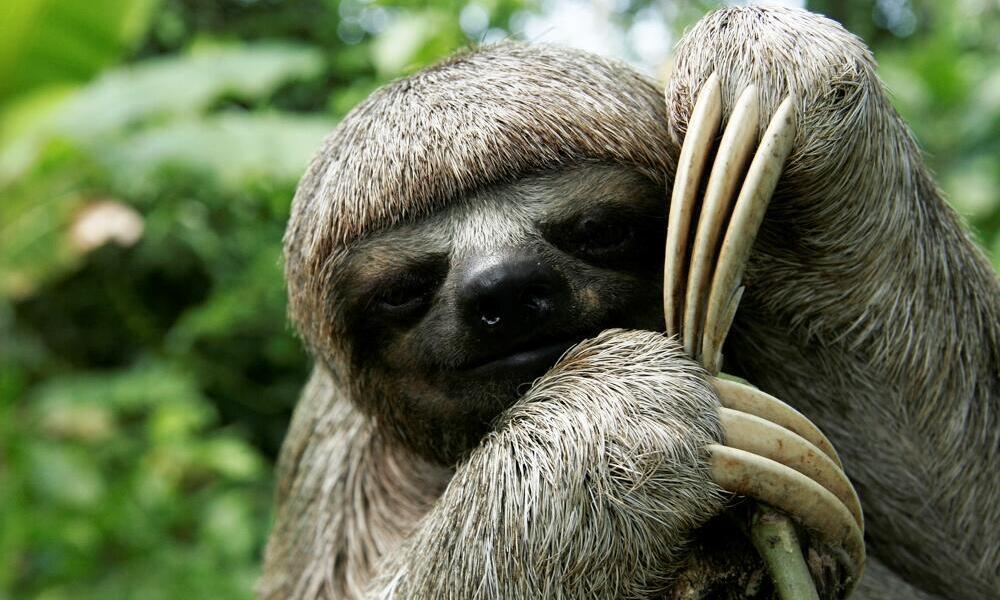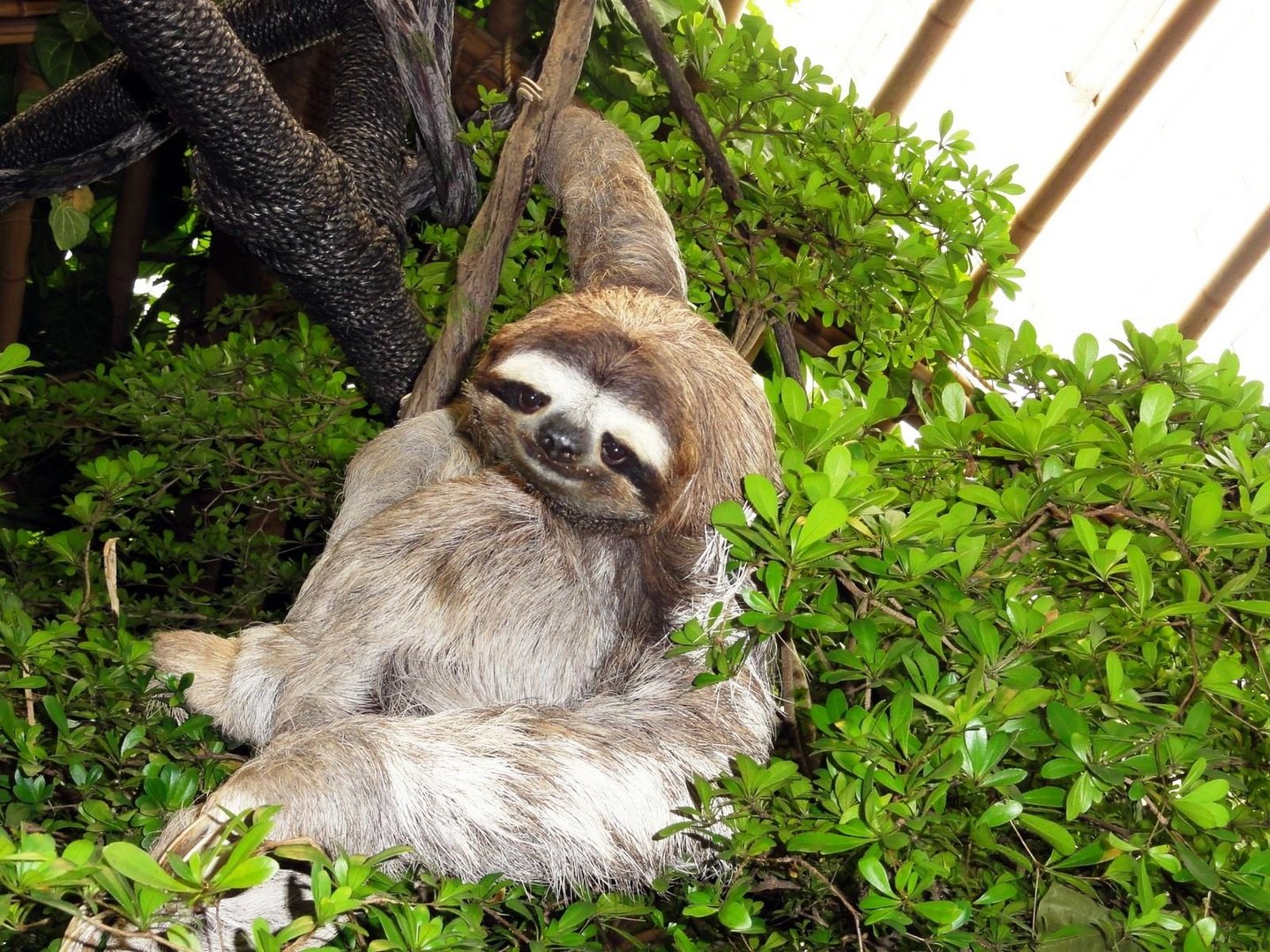Unpacking Flash: The Real Story Behind The Sloth From The Movie Zootopia
The unforgettable character of Flash, the sloth from the movie Zootopia, truly captured hearts and sparked countless laughs, you know. His super slow movements and even slower speech made for some of the film's most memorable moments, actually. This particular sloth from the movie Zootopia showed us a different side to these creatures, one full of humor and a certain kind of charm, at the end of the day.
That movie scene, where Flash processes a joke at a glacial pace, left many of us giggling, so it did. It made many people wonder about real sloths and what they are truly like, in a way. Did the movie get it right about their speed, or was that just for comedic effect, you might ask?
This article will look at the famous sloth from the movie Zootopia and then compare him to his real-life counterparts, pretty much. We will also explore the lives of actual sloths, the challenges they face, and how we can help protect them, you see. It's a chance to learn more about these fascinating animals, both on screen and in their natural homes, basically.
- Abbey Love On The Spectrum
- Dubai Strawberry Cup Near Me
- Chris Jones 40 Yard Dash
- Jasmine Crockett Husband
- B Cup Breast Size
Table of Contents
- Flash's Speed and The Zootopia Effect
- Real Sloths: A Closer Look
- Sloth Conservation: Why It Matters
- Frequently Asked Questions About Sloths
Flash's Speed and The Zootopia Effect
Flash, the sloth from the movie Zootopia, works at the Department of Mammal Vehicles, you know. His name is quite ironic, given his incredibly slow pace, which is kind of the whole point. This character quickly became a fan favorite, showing that even the slowest among us can be quite charming, actually.
The humor in Flash's character comes from the stark contrast between his job and his nature, so it does. He processes information and performs tasks at a speed that would make anyone else impatient, yet he does it with a calm, happy demeanor, more or less. This portrayal certainly made many people wonder if real sloths are quite this slow, you see.
While the movie exaggerates for laughs, it does capture a core truth about sloths: their slowness, in a way. This cinematic depiction, however, also brought a lot of attention to these animals, which is a good thing for their real-life counterparts, as a matter of fact. It made people curious about what makes a sloth a sloth, really.
- Remoteiot P2p Download
- Filmy Fly Com
- Sophie Rain Spiderman Vid
- How Long Is A Fortnight
- Drew Pritchard Divorce
The Zootopia movie, in a sense, made sloths cool, you know. Before Flash, many people knew little about them beyond their name, so they didn't. Now, thanks to the sloth from the movie Zootopia, more people want to learn about these tree-dwelling creatures, which is pretty neat.
This increased interest can, actually, lead to more support for sloth conservation efforts, which is pretty important. When people connect with an animal, even a fictional one, they often feel more inclined to help protect the real ones, you know. Flash, in his own slow way, did a lot for sloth awareness, you could say.
Real Sloths: A Closer Look
So, what about the actual sloths that inspired Flash, you know? They are truly remarkable animals with many unique traits, in a way. While they might not work at the DMV, their lives are full of interesting facts, as a matter of fact.
Real sloths are, indeed, noted for their slowness of movement, so they are. They spend most of their lives hanging upside down in the trees of tropical areas, which is pretty wild. This slow, tree-bound lifestyle is a key part of their survival, you see.
There are, actually, six living species of sloth, and they all live in a particular part of the world, more or less. Learning about them helps us appreciate the natural world, you know. Each species has its own special qualities, which is pretty cool.
My text tells us to discover 10 interesting facts about sloths, and learn more about the sloth conservation foundation's work to protect sloths in the wild, so we will. We can also learn about the issues and threats they are facing, and what you can do to help, you know. It's a chance to really get to know these animals, actually.
We will explore the sloth's scientific classification, physical characteristics, habitat, behavior, diet, reproduction, predators, conservation status, and much more, basically. This way, we get a full picture of these amazing creatures, you know.
Where Sloths Call Home
All six living species are limited to the lowland tropical forests of South and Central America, so they are. This is their natural home, where they find everything they need, in a way. They are truly creatures of the forest canopy, you know.
You can find them high in the forest canopy, often sunning, resting, or feeding on leaves, actually. Their lives are very much tied to these tall trees, which provide shelter and food, you see. They are masters of their arboreal environment, more or less.
These forests are vital for their survival, so protecting them is very important, you know. Without their natural homes, sloths would have nowhere to go, which is a pretty serious thought. This makes conservation efforts even more pressing, actually.
The Two Main Types of Sloths
There are two main species of sloth, identified by whether they have two or three claws on their front feet, basically. This is a key way to tell them apart, you know. It's a simple feature that helps scientists classify them, actually.
The two-toed sloths and three-toed sloths have some differences in their looks and habits, so they do. For example, three-toed sloths tend to be a bit slower and eat a more restricted diet of leaves, you know. Two-toed sloths are a little more active and eat a wider range of foods, in a way.
My text mentions different types of sloths with pictures and facts, and a sloth species list and identification guide, which is really helpful. Knowing these distinctions helps us understand their diversity, you see. It shows that even within "sloths," there's a lot of variety, actually.
A Living Ecosystem in Their Fur
The coat of a sloth is basically like a mini jungle, with not just algae but several resident insect species, including a moth that only lives on a sloth, you know. This is a truly amazing fact about them, in a way. Their fur is a whole world unto itself, actually.
The Cryptoses choloepi moth, dubbed the sloth moth, literally only lives in sloth fur, and so do some species of scarab beetles, you see. This is a very specific relationship between animals, which is pretty unique. It shows how interconnected nature can be, more or less.
There’s so much going on that the sloth’s coat even provides snacks for peckish birds, you know. Birds might pick off insects or even algae from the sloth's fur, which is a kind of natural cleaning service, actually. It's a fascinating example of symbiosis, in a way.
This complex ecosystem in their fur also helps them blend in with their surroundings, so it does. The algae gives their fur a greenish tint, making them look more like part of the tree, you know. This camouflage is a big help against predators, actually.
The Mystery of Sloth Body Temperature
Did you know that sloths cannot regulate their own body temperature very well, you know? This is a rather interesting fact about their biology, in a way. They rely on their environment to help them stay warm or cool, actually.
They often bask in the sun to warm up, or move into the shade to cool down, so they do. This is why you might see them sunning themselves high in the canopy, you see. It's a simple but effective way for them to manage their internal temperature, more or less.
This inability to regulate body temperature contributes to their slow metabolism and energy conservation, you know. It's all part of their unique adaptation to their environment, actually. It's a reminder that animals have many different ways of living, in a way.
My text says to read on to learn more about these and other sloth key facts, and we are certainly doing that, you know. There's always more to discover about these amazing creatures, actually. Their biology is truly something special, in a way.
The Slow Life of a Baby Sloth
The baby sloth sticks with the mother for about six months, grasping its mom’s belly as she moves through the trees, you know. This is a very close bond during their early life, actually. It's a time for protection and learning, in a way.
This is an important bonding period that helps the offspring learn and develop, so it is. The baby learns how to find food, how to move safely through the trees, and how to avoid danger, you see. The mother teaches her young everything they need to know, more or less.
When the sloth leaves its mom after about six months, it adopts part of its mother’s range, continuing to communicate with the parent through calls, you know. This means they stay somewhat connected even after becoming independent, actually. It's a gentle transition into adulthood, in a way.
The calls they use to communicate are often soft, high-pitched sounds, so they are. These sounds help them keep track of each other in the dense forest, you see. It's a quiet world for these quiet animals, more or less.
Sloths have no natural body odor, so they look and smell just like a tree, you know. This is another amazing adaptation for survival, actually. It helps them hide from predators who rely on smell to find their prey, in a way.
Sloth Conservation: Why It Matters
Learning about the sloth, as well as the threats it faces, what WWF is doing to conserve its future, and how you can help, is really important, you know. These gentle creatures need our support to continue thriving in their natural homes, actually. Their future depends on us, in a way.
My text tells us to discover more about the sloth, the issues and threats they are facing, and what you can do to help, so we should. One of the biggest threats is habitat loss, as their forest homes are being cut down, you see. This leaves them with nowhere to live or find food, more or less.
The sloth conservation foundation's work to protect sloths in the wild is very important, you know. These organizations work tirelessly to save sloth habitats and rescue injured sloths, actually. They are on the front lines of protecting these animals, in a way.
You can help by supporting these conservation groups, either through donations or by spreading awareness, you know. Every little bit helps make a difference for sloths and their future, actually. Learning more about them is a great first step, in a way.
For more information on how you can contribute to protecting these wonderful animals, you can visit the World Wildlife Fund (WWF) website, so you can. They do a lot of good work for sloths and many other species, you see. It's a great resource for learning more, actually.
Learn more about sloths on our site, and you can also find out about other amazing animals on our animal facts page, too it's almost. There's a whole world of information waiting for you, you know. Every bit of knowledge helps us appreciate our planet more, actually.
Frequently Asked Questions About Sloths
Are sloths really as slow as Flash in Zootopia?
While Flash's speed in Zootopia is played for laughs, real sloths are indeed very slow, you know. They move at a very deliberate pace, which helps them save energy, actually. Their slow speed is a key part of their survival strategy, in a way.
What do sloths eat in the wild?
Sloths primarily eat leaves, which are not very nutritious, so they aren't. This low-energy diet is one reason why they move so slowly, you see. Some species might also eat small insects or fruits, but leaves are their main food source, more or less.
How long do sloths live?
In the wild, sloths can live for about 20 to 30 years, you know. Some sloths in human care have lived even longer, actually. Their slow metabolism might contribute to their relatively long lifespan, in a way.
- Do A Barrel Barrel Roll
- Mikafans Leaks
- Hannah Love Is Blind
- How To Screenshot On Pc
- Pam Bondi Have Children

Sloth | Species | WWF

Brown-Throated Sloth | Rainforest Alliance

Sloth photo & image | animals, zoos, parks & falconries, mammals images